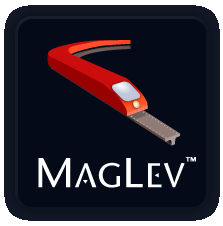Learn about MagLev
Basic MagLev Object Persistence
MagLev brings a transparent, distributed object space to Ruby. To try it yourself, make sure you’ve installed MagLev, and that the MagLev server is running.
First, fire up a maglev-irb session (since we’ll be using two different
irb sessions, I’ve set the prompts to “One” and “Two” to make it easier to
follow along).
$ maglev-irb
One :001:0>
MagLev comes pre-seeded with a persistent hash named
Maglev::PERSISTENT_ROOT. It is a convenient starting place to put
objects that you want to share with other VMs. We’ll put a message into
that hash and then save it:
One :001:0> Maglev::PERSISTENT_ROOT[:demo] = "Message from maglev-irb #1"
=> "Message from maglev-irb #1"
One :002:0> Maglev.commit_transaction
=> true
Now, we can start a new maglev-irb session and see the message:
$ maglev-irb
Two :001:0> Maglev::PERSISTENT_ROOT[:demo]
=> "Message from maglev-irb #1"
Cool!
MagLev’s persistence model is persistence by reachability. That means that
when MagLev persists (saves) an_object, all objects reachable from
an_object (by following references held in instance variables) are also
persisted. Maglev::PERSISTENT_ROOT is simply a persistent hash, so when
it is saved, all objects it references (i.e., the keys and values) are also
saved (as well as any objects they reference, and so on).
So, we can create a “complex” object, and send it from irb process Two back to irb process One. First, we create a normal array and fill it with objects:
Two :002:0> my_array = Array.new
=> []
Two :003:0> my_array << "Hello from #2"
=> ["Hello from #2"]
Two :004:0> my_array << Time.now
=> ["Hello from #2", Mon Oct 17 13:45:52 -0700 2011]
Then, we hook it into the persistent graph by putting the array into
PERSISTENT_ROOT, and committing the change:
Two :005:0> Maglev::PERSISTENT_ROOT[:demo] = my_array
=> ["Hello from #2", Mon Oct 17 13:45:52 -0700 2011]
Two :006:0> Maglev.commit_transaction
=> true
Since PERSISTENT_ROOT is persistent, and it references the array, and the
array references both the string and the time object, all of that will now
be available to other VMs. We can check by switching to the first
maglev-irb session and taking a look:
One :003:0> Maglev::PERSISTENT_ROOT[:demo]
=> "Message from maglev-irb #1"
Hmmm…the first irb session still sees the old value. To coordinate changes to the shared object space, MagLev uses transactions. We need to refresh our transactional view in order to see the new data:
One :004:0> Maglev.abort_transaction
=> Maglev::System
One :005:0> Maglev::PERSISTENT_ROOT[:demo]
=> ["Hello from #2", Mon Oct 17 13:45:52 -0700 2011]
Now we see the new data from irb Two. Most of the standard Ruby
objects are already capable of being persisted (there are a few that
don’t make sense to see in another VM, like Mutex and Socket). You
can even persist Procs and Threads and run them on other VMs:
One :006:0> Maglev::PERSISTENT_ROOT[:run_me] = Proc.new { puts "Hi from another VM" }
=> #<Proc>
One :007:0> Maglev.commit_transaction
=> true
And we can run it from the other VM:
Two :007:0> Maglev.abort_transaction
=> Maglev::System
Two :008:0> Maglev::PERSISTENT_ROOT[:run_me].call
Hi from another VM
You could even make a simple worker queue in a few lines of Ruby by passing procs between VMs.
Threads cannot be persisted by reference (because the JIT may have compiled methods to machine code, which cannot be ported across VMs), but we can use a trick.
One :009:0> Thread.start { callcc {|cc| $cont = cc}; p "Run after One pretty callcc" }
"Run after One pretty callcc"
=> #<GsProcess:0xdf69e01 false>
One :010:0> Maglev::PERSISTENT_ROOT["cc"] = $cont
=> #<Continuation:0xecfc401 @_st_process=#<GsProcess:0xdf6a901 sleep>>
One :011:0> Maglev.commit_transaction
=> true
What did we do here? Well, we started a thread and created a continuation. A continuation captures the state of a computation, effectively copying the stack at the point it was created (We can see in the inspection output that the continuation has a reference to a copy of the Thread that created it). We assign the continuation to a global variable for convenience, and then commit it to the Stone repository.
On to the second VM:
Two :009:0> Maglev.abort_transaction
=> true
Two :010:0> $cont = Maglev::PERSISTENT_ROOT["cc"]
=> #<Continuation:0xecfc401 @_st_process=#<GsProcess:0xdf6a901 sleep>>
Two :011:0> Thread.start { $cont.call }
"Run after One pretty callcc"
=> #<GsProcess:0xdd33b01 sleep>
Wow. We just copied a complete thread on to a different VM and resumed it there.
So much for examples, more example code can be found in the hat trick example that also demonstrates basic MagLev persistence.
